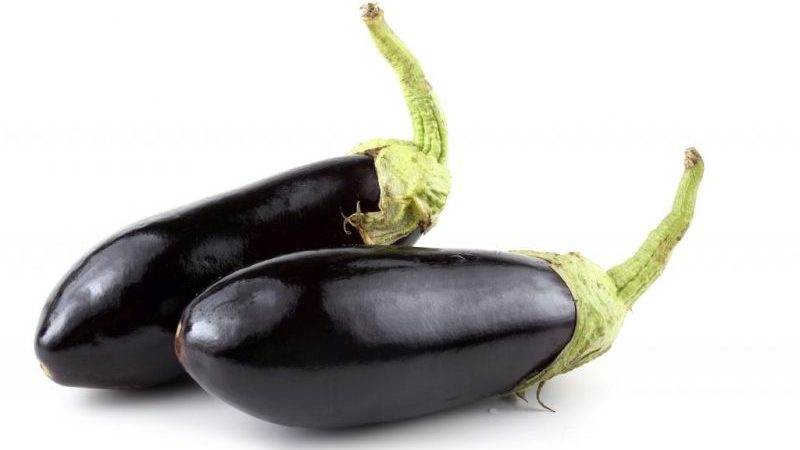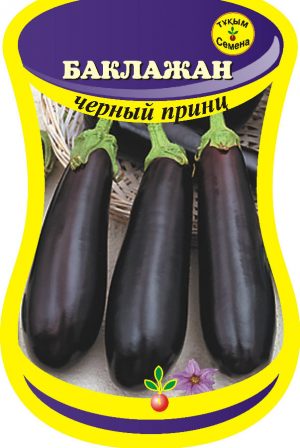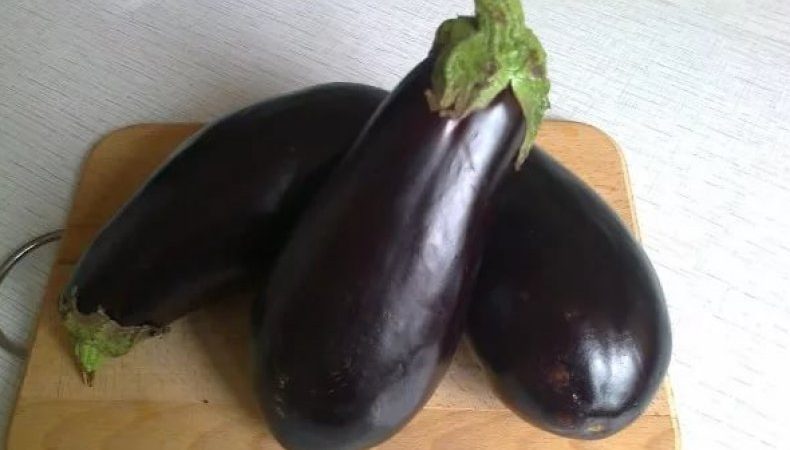Review of the Black Prince eggplant variety and instructions for growing it
Eggplant - a close relative of tomatoes and potatoes, contains vitamins and minerals useful for the body. Variety Black Prince - bright representative of this species with high yields. It is an annual vegetable that is suitable for growing in greenhouses but can also be grown outdoors.
The content of the article
Description of the variety
The Black Prince variety was bred by Russian researchers from the Gavrish company.
The breeders have provided for the possibility of growing these eggplants in the open field in the conditions of the southern regions of Russia.

Distinctive features
There are several distinguishing features of this variety:
- during ripening, foliage is dark purple;
- no thorns on the flower cup;
- there is almost no bitterness in the taste.
Specifications
In temperate latitudes, the Black Prince variety is grown in greenhouses. Eggplant grows in bushes 60-80 cm high. The leaves are semi-lowered, medium-sized, fleecy, green. Fruits are slightly curved pear-shaped, 8-12 cm in diameter, up to 20 cm long, weight - 200 g.
The color of the fruit is dark purple on the outside, with a glossy sheen, and on the inside there is a light yellow pulp with a small amount of grains. Has a pleasant taste with hardly noticeable bitterness. The Black Prince has a high yield, which reaches 6-8 kg per 1 m².
How to grow this variety yourself
To grow the Black Prince eggplant on your own and get a decent harvest, you need to select high-quality planting material, bring out viable seedlings and provide plants with care and protection from pests.
If the eggplants will be grown in a greenhouse, then the optimal time for sowing is mid-February. For transplanting into open ground in the southern regions, seedlings are planted in mid-March.
Growing seedlings
Experienced farmers advise taking seeds from specialty stores. You can choose material from your own grown fruits - choose only the ripe eggplants.
The seeds must be disinfected, that is, soaked for 25 minutes in a solution of potassium permanganate. After that, you need to rinse the seeds under water.
Next, the seeds are placed in fabric bags and left in a previously prepared nutrient solution: 1 tsp. nitrophosphate (can be replaced with wood ash) for 1 liter of water.
Important! The temperature of the nutrient solution should not exceed +25 ° C.
After 2 days, the seeds are laid out on a plate and placed in a room where the air temperature is + 25 ... + 30 ° C for 1-2 days.
 The plant is unpretentious to the composition of the soil. Experienced gardeners are advised to buy soil in specialized stores, since the garden soil must be disinfected and fed so that the plant does not get sick. The soil should contain peat, wood ash, eggshell powder, humus, compost, vermicompost.
The plant is unpretentious to the composition of the soil. Experienced gardeners are advised to buy soil in specialized stores, since the garden soil must be disinfected and fed so that the plant does not get sick. The soil should contain peat, wood ash, eggshell powder, humus, compost, vermicompost.
The seeds can be planted in separate cups or in a large container with peat substrate. Seeds are placed at a depth of no more than 1 cm, optimally 0.5 cm. A distance of 35-50 cm is left between the seeds so that they do not interfere with each other. Then the container is covered with foil and placed in a warm place, where not much sunlight falls.
When the first shoots appear, the container must be transferred to a place well-lit by daylight. At night, the seedlings are covered with a dark film.
Water the plants once a week with slightly warmed water. It is better to spray the first shoots, rather than water, in order to avoid washing out the roots, since the planting depth is small.During subsequent watering, make sure that no water gets on the leaves of the seedlings.
Council. If the topsoil dries up, increase the number of watering up to 2-3 times a week.
Transfer
To plant the Black Prince, choose the sunniest beds on the site. The soil must have a neutral acid-base balance.
For planting eggplants, a two-line ribbon scheme is used: parallel to each other or in a checkerboard pattern.
Transplant the plant carefully so as not to damage the roots. Do this with the clod of earth in which the seedling was. The least traumatic option for growing seedlings is peat pots.
The bush is formed into 3 stems to increase yield.
Further care
After the picking, the seedlings are fed, then it is done every 7-10 days. For feeding, use ammonium nitrate, superphosphate, potassium chloride.
Important! Combine top dressing with watering.
Water the small sprouts often, every 1-2 days, but little by little. Grown plants are watered as the earth dries up.
Since the Black Prince has a rod-shaped root and does not form additional roots, they do not huddle it, but only loosen the ground under it. The plant loves sun and regular watering.
Diseases and pests characteristic of the variety
The appearance of the foliage indicates the state of the plant:
- if the leaves rose at an acute angle, buds and ovaries began to fall off, this indicates phosphorus starvation;
- when the leaves curl, turn brown at the ends and become stained - the vegetable lacks potassium;
- pale leaves signal nitrogen deficiency.
Twisted leaves may also indicate that the soil has an excess of salt or the plant has been attacked by a spider mite. In the first case, fertilizers are used, abundantly watered or gypsum is carried out with the help of raw gypsum. In the fight against the tick, folk methods will help: infusion of potato tops, tobacco dust or garlic.
Colorado potato beetle is harvested by hand. With a large population, professional means are used, but they do it 3-4 weeks before harvest.
Harvesting and application of the crop
The crop is harvested as the fruit ripens, so as not to interrupt the fruiting process. Ripe fruit is firm to the touch. If the vegetable is removed on time, it will have few seeds and dense flesh. Overgrown eggplant becomes oak, difficult to cut, does not soften during cooking, and tastes bitter. Fruit may overripe if left for a long time be kept.

When plucking, the stem can be damaged, so ripe eggplants are cut with pruners or scissors, leaving a tail 2 cm.
Black Prince eggplants are suitable for commercial cultivation. The fruits are supplied to restaurants of oriental cuisine, where national dishes are prepared from them. Vegetable caviar is made from eggplant in production. At home, use stewed or canning.
Advantages and disadvantages of the variety
Farmers note the pros and cons of growing the Black Prince variety.
Advantages:
- high productivity;
- withstands long distance transportation;
- has a marketable appearance and good taste;
- unpretentious to the composition of the soil;
- resistant to late blight and powdery mildew;
- versatile in preparation.
Disadvantages:
- does not grow in darkened areas;
- should not be planted next to tomatoes, potatoes and peppers.
Reviews
According to reviews, eggplant Black Prince is a favorite grade for many gardeners.
Marika, Moscow: «I like Black Prince eggplants very much. Last year we were pleased with the abundant harvest, unpretentiousness, and the taste of the fruits. Great taste in dishes - there is no bitterness like in other varieties. "
Anna, Vologda: “We already have frosts in August. I have grown well the Black Prince in the greenhouse, did not die from the cold. The eggplants grew thin and long, as in the photo. "
Conclusion
The Black Prince eggplant variety is quite young, but already known to gardeners. Eggplants of this variety require a lot of sun, regular watering.The black prince has a strong immunity to diseases, but the larvae and adults of the Colorado potato beetle pose a danger to him.
Due to its high yield and the possibility of transportation, the variety is grown not only in garden plots, but also on an industrial scale.